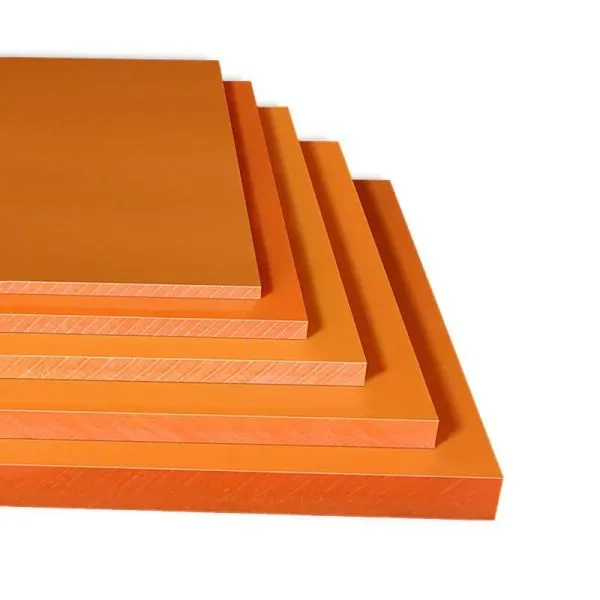Key Parameters: Flammability, Electrical Strength, and Thermal Index
Flammability Testing: Ensuring Fire Safety
Flammability testing is a critical aspect of phenolic paper sheet evaluation. UL 94, the Standard for Safety of Flammability of Plastic Materials for Parts in Devices and Appliances, provides a comprehensive framework for assessing fire resistance. This standard includes various classifications, such as HB, V-0, V-1, and V-2, each representing different levels of flame retardancy. ASTM D635 offers an alternative method for measuring the burning rate of plastics in a horizontal position, complementing the UL 94 vertical burning tests.
Electrical Strength: Measuring Insulation Capabilities
Electrical strength testing evaluates a material's ability to resist electrical breakdown under high voltage stress. ASTM D149, the Standard Test Method for Dielectric Breakdown Voltage and Dielectric Strength of Solid Electrical Insulating Materials at Commercial Power Frequencies, is widely used for this purpose. This test determines the voltage at which electrical failure occurs through the material, providing crucial data on its insulation properties. IEC 60243-1 offers a similar testing methodology, ensuring global consistency in electrical strength evaluation.
Thermal Index: Assessing Long-term Heat Resistance
The thermal index of phenolic paper sheets indicates their long-term heat resistance. UL 746B, the Standard for Polymeric Materials - Long Term Property Evaluations, outlines procedures for determining this crucial parameter. ASTM D3850 provides additional guidance on estimating the thermal endurance of electrical insulating materials. These tests involve exposing samples to elevated temperatures over extended periods, assessing changes in key properties to predict long-term performance under thermal stress.
How Do These Standards Ensure Consistent Material Performance?
Standardized Testing Protocols
UL, ASTM, and IEC standards provide detailed, step-by-step testing procedures that ensure consistency across different laboratories and testing facilities. These protocols specify sample preparation methods, test conditions, and measurement techniques, minimizing variability in results. By following these standardized approaches, manufacturers can reliably compare their phenolic paper sheets to industry benchmarks and competitor products.
Quality Control and Batch Testing
Implementing these testing standards as part of a robust quality control process allows manufacturers to maintain consistent material performance across production batches. Regular testing of samples from each production run helps identify any deviations from specified properties, enabling prompt corrective actions. This proactive approach ensures that every sheet of phenolic paper meets the required performance criteria before reaching the end-user.
Continuous Improvement and Innovation
Adherence to UL, ASTM, and IEC standards not only ensures consistent performance but also drives continuous improvement and innovation in phenolic paper sheet manufacturing. As these organizations regularly update their standards to reflect technological advancements and emerging safety concerns, manufacturers are motivated to enhance their products and processes. This ongoing cycle of testing, improvement, and innovation contributes to the overall advancement of phenolic paper sheet technology.
The Role of Certification in Component Approval and Market Access
Product Certification and Listing
Certification to UL, ASTM, or IEC standards plays a crucial role in gaining market acceptance for phenolic paper sheets. Many industries and regulatory bodies require components to be certified or listed by recognized testing laboratories. For instance, UL listing is often mandatory for electrical components used in North American markets. Obtaining these certifications demonstrates compliance with rigorous safety and performance standards, instilling confidence in potential buyers and end-users.
Global Market Access
As international trade continues to grow, certification to globally recognized standards becomes increasingly important. IEC standards, in particular, facilitate global market access by providing a common set of requirements accepted in many countries. Manufacturers who certify their phenolic paper sheets to these international standards can more easily enter new markets and participate in global supply chains, expanding their business opportunities.
Regulatory Compliance and Risk Mitigation
Certification to UL, ASTM, and IEC standards helps manufacturers navigate complex regulatory landscapes. Many countries have adopted these standards as part of their national regulations for electrical and mechanical components. By ensuring compliance with these widely accepted standards, manufacturers can mitigate regulatory risks and avoid potential legal issues associated with non-compliant products. This proactive approach to compliance protects both the manufacturer and the end-user, fostering trust in the supply chain.
Conclusion
The rigorous testing standards set by UL, ASTM, and IEC play a pivotal role in ensuring the quality, safety, and performance of phenolic paper sheets. By evaluating critical parameters such as flammability, electrical strength, and thermal index, these standards provide a comprehensive framework for material assessment. Adherence to these protocols not only guarantees consistent material performance but also facilitates product certification, market access, and regulatory compliance. As the demand for reliable insulation materials continues to grow across various industries, the importance of these testing standards in driving innovation and maintaining product integrity cannot be overstated.
FAQs
What are the main advantages of phenolic paper sheets?
Phenolic paper sheets offer excellent electrical insulation properties, high mechanical strength, good chemical resistance, and impressive temperature stability. They are also easy to machine and cost-effective, making them suitable for a wide range of applications in electrical and mechanical engineering.
How do phenolic paper sheets compare to other insulating materials?
Compared to many other insulating materials, phenolic paper sheets offer a unique combination of electrical, mechanical, and thermal properties. They generally provide better mechanical strength and temperature resistance than many plastic alternatives, while being more cost-effective and easier to fabricate than some ceramic or composite materials.
Experience the Quality of J&Q's Phenolic Paper Sheets
At J&Q, we pride ourselves on producing high-quality phenolic paper sheets that meet and exceed industry standards. With over 20 years of manufacturing experience and 10 years in international trade, we offer superior products and unmatched service. Our Phenolic Paper Sheet, known for its excellent mechanical strength and electrical insulation properties, is perfect for high-performance electrical machinery and equipment. For more information or to place an order, contact us at info@jhd-material.com.
References
Underwriters Laboratories. (2018). UL 94: Standard for Tests for Flammability of Plastic Materials for Parts in Devices and Appliances.
ASTM International. (2021). ASTM D149: Standard Test Method for Dielectric Breakdown Voltage and Dielectric Strength of Solid Electrical Insulating Materials at Commercial Power Frequencies.
International Electrotechnical Commission. (2019). IEC 60243-1: Electrical strength of insulating materials - Test methods - Part 1: Tests at power frequencies.
Underwriters Laboratories. (2020). UL 746B: Polymeric Materials - Long Term Property Evaluations.
ASTM International. (2019). ASTM D3850: Standard Test Method for Rapid Thermal Degradation of Solid Electrical Insulating Materials by Thermogravimetric Method (TGA).
Harper, C. A. (2020). Handbook of Materials for Product Design. McGraw Hill Professional.






